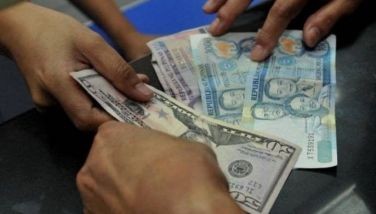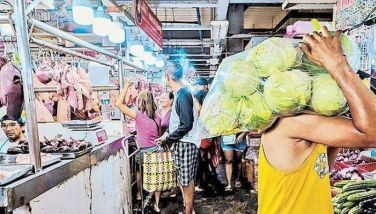Farmers refute claims rice liberalization has lowered rice prices
MANILA, Philippines — Local farmers are contradicting the claim of the economic team that the opening up of the market has resulted in a significant decline in rice prices.
The Federation of Free Farmers (FFF) questioned recent claims of the Department of Finance and the National Economic and Development Authority that the Rice Tariffication Law has brought down prices.
While FFF national manager Raul Montemayor acknowledged that rice prices have gone down in recent months, he said retail prices of rice are actually higher than in 2016 and 2017, when the quantitative restrictions on rice imports were still in effect.
“It is unrealistic to compare current prices against prices during the rice crisis in 2018. It is also deceptive to attribute the current decline in prices to the Rice Tariffication Law,” Montemayor said.
“The spike in prices in 2018 was abnormal and was caused by the refusal of the economic managers to allow the NFA to replenish its dwindling stocks. It was only when President Duterte intervened and allowed the NFA and the private sector to import that prices started to go down,” he added.
Data from the Philippine Statistics Authority indicate that prices for well-milled rice have gone down to P42.92 per kilogram in June 2019, or by about P6 per kilo from their peak price of P49.36 in September 2018.
Retail prices of regular milled rice went down by P7.54 per kilo during the same period. FFF noted that palay prices continues to go down, averaging P17.85 per kilo in June 2019 compared to P23.15 in September 2018 based on PSA data.
This represented a 23 percent decline in farm gate prices, compared only 13 percent for well-milled rice and 16 percent for regular milled rice during the same reference period.
The FFF added that palay farm gate prices were generally lower in 2019 compared with prices in 2016 and 2017 when the import restrictions were still in place.
“What is most painful to farmers is that their sacrifices are apparently going to waste because consumers are not getting the full benefits from the decline in palay prices and the entry of supposedly cheaper imports,” Montemayor said.
“The PSA data in fact appears to show that both consumers and farmers were better off when the quantitative restrictions were still in place, if we exclude the abnormal price movements in 2018,” he added.
Further, the FFF also cautioned the government against its move to impose suggested retail prices on commercial rice.
“It may be true that some importers and traders are earning extraordinary profits at the expense of consumers. However, traders can again use the cap on rice prices as an excuse to buy at even lower prices for farmers,” Montemayor said.
“At this point in time when rice prices have normalized, government must focus on addressing the problems of small farmers, specially since the main harvest season is about to begin,” he added.
The Rice Liberalization Law, which took effect last March, removed the quantitative limits on rice imports and now allows the entry of unlimited volumes of rice from abroad provided the proper tariffs are paid.
In advocating for the passage of the law, the country’s economic managers claimed that local consumers were paying double what their ASEAN counterparts were paying for rice and that rice prices could go down by up to P10 per kilo once imports are allowed to freely enter the country.
- Latest
- Trending




























